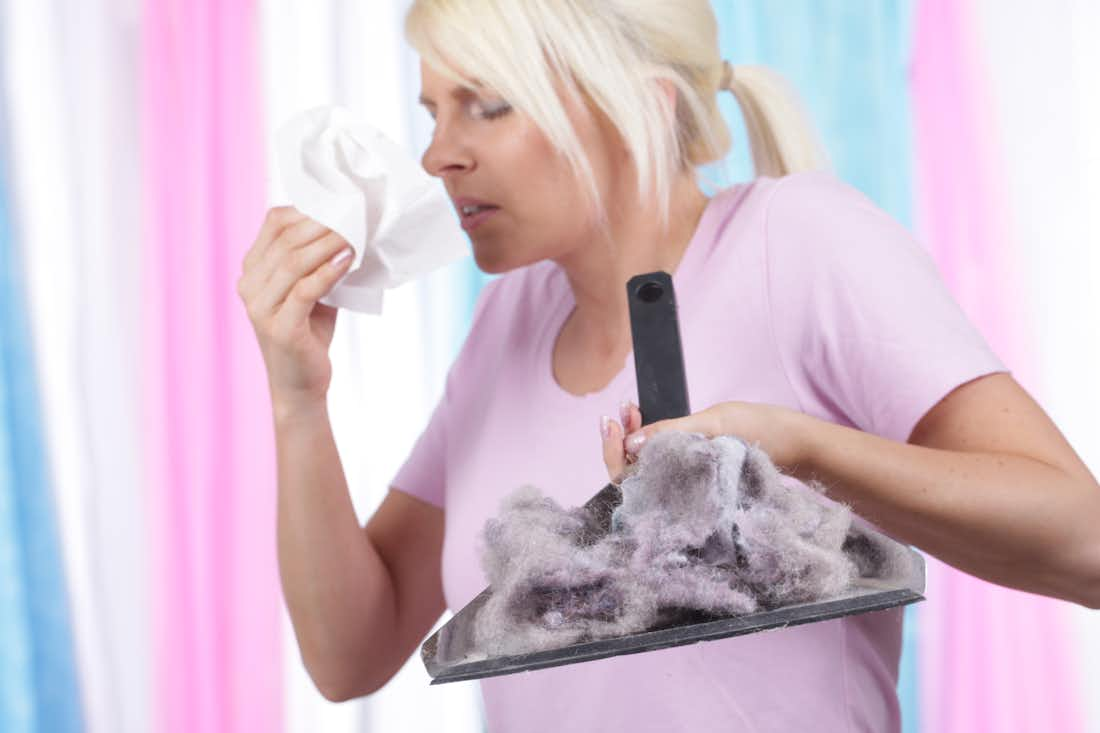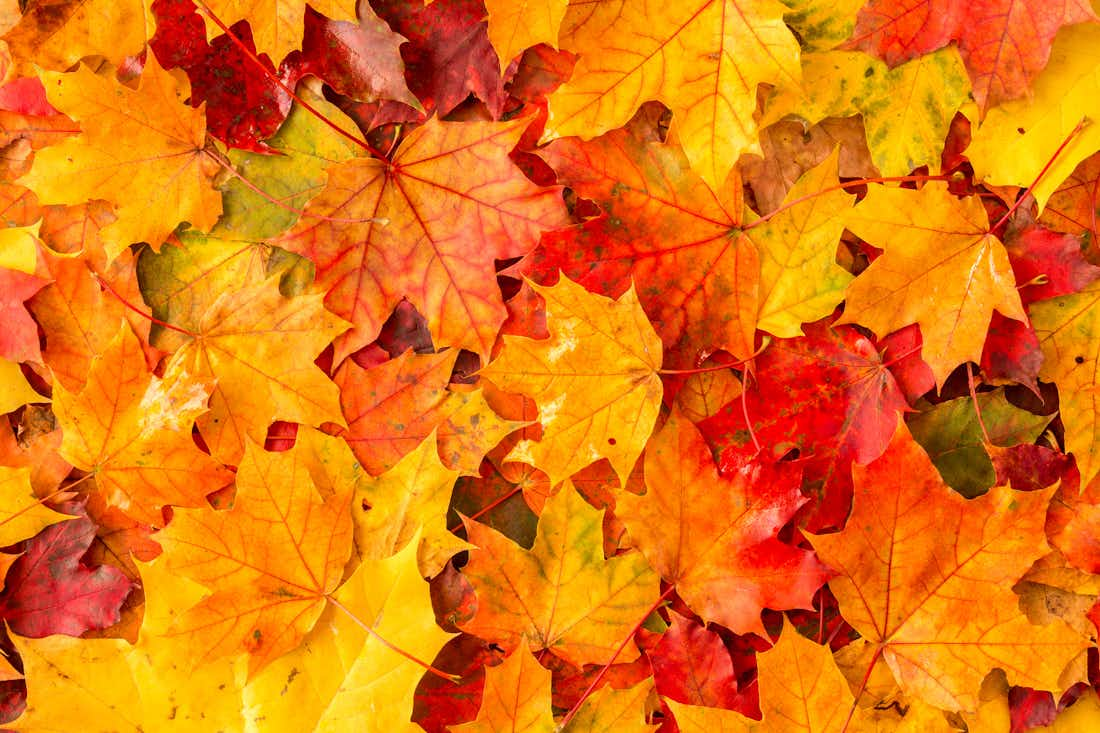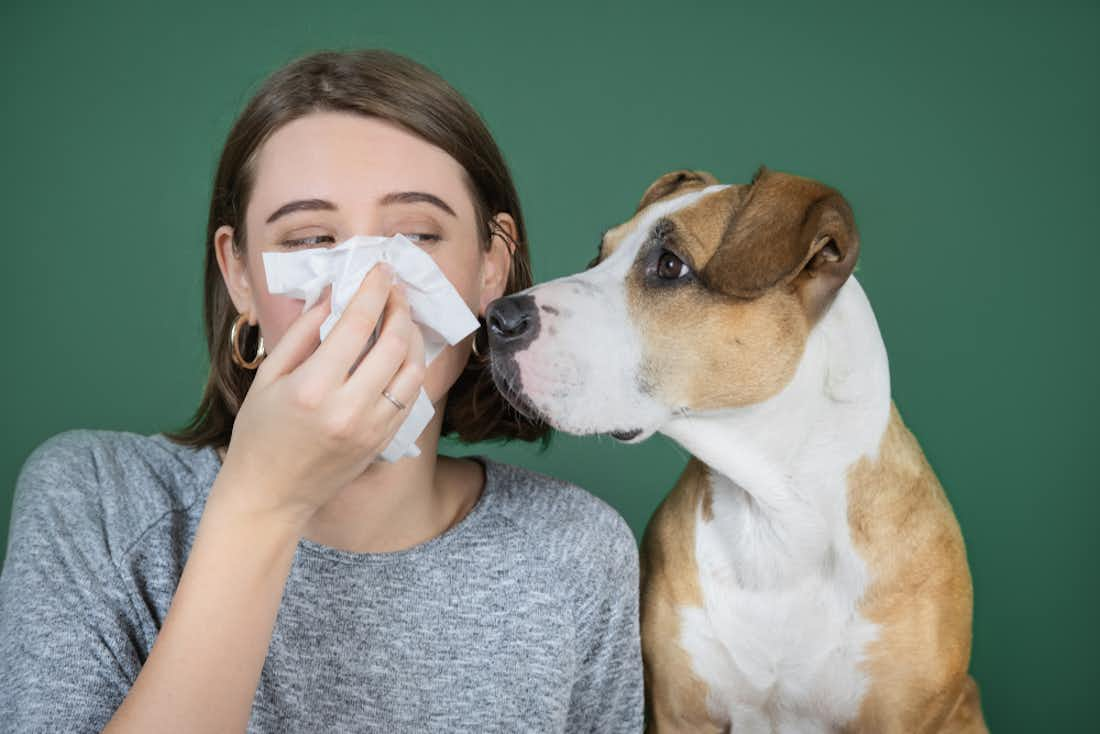Mar 23, 2022
The 8 Worst States for Allergies
5 minute read
If your itchy, watery eyes are making it hard for you to enjoy the foliage of the changing seasons, you’ve probably got some seasonal allergies. And while seasonal allergies are common across the United States, there are places across the globe where people don’t have any seasonal allergies whatsoever.
Seasonal allergies, or allergic rhinitis, are caused by pollen. Pollen floats around through the air and allows plants to reproduce. The autumn and spring months are generally when plants are most active, and pollen counts are highest.
The severity of your symptoms might be dependent on the state you’re living in. Let’s take a look at the worst states for seasonal allergies so you can decide if it’s time to get out of dodge.
1. Pennsylvania
Pennsylvania’s rich history and proximity to the ocean and New York City have made it one of the best places to live. There’s a reason why it’s the 4th most populated state in the entire country.
But the 13 million Pennsylvania residents are also prone to some of the most challenging cities to live in if you've got seasonal allergies.
Specifically, the Allergy and Asthma Foundation of America has ranked Scranton, PA, the most challenging place to live with seasonal allergies. It’s no wonder why the characters in _The Office _rarely actually left their cubicles.
According to the foundation, Scranton ranked the worst due to its higher than average spring and fall pollen and its higher than average allergy medicine use combined with the fact it has fewer board-certified allergists practicing in the city.
So what kind of pollen is causing all of this trouble? For the most part, Pennsylvanians are subject to reactions from ragweed pollen, which is a flowering plant that is one of the main contributors to hay fever.
But Scranton isn’t the only time Pennsylvania showed up on this list. In fact, a little further down at number five, Pittsburgh was ranked as another challenging place to live. While those in Pittsburgh are exposed to the same allergens as people in Scranton, there’s another trigger responsible for the coughing and sneezing in this city.
The city of Pittsburgh has some of the dirtiest air in the nation, and the American Lung Association has graded it an F for its overall air quality. So if you live in Pittsburgh, your allergy symptoms might be due to smoke or dust particles rather than plant pollen.
2. Texas
The lone star state is home to delicious barbeques, a giant pour of beer, and a whole lot of dancing. But it’s also home to some of the most pollen-filled cities in the entire country. The city of McAllen in Hidalgo, Texas, was ranked one of the worst cities in the country to live with allergies.
This is mostly due to the area’s rich history of agriculture. Since there are bound to be tons of flowering plants, trees, and other shrubs, all of those plants will spew pollen into the air for reproduction. Plus, since this industry is bustling year-round, it means that allergy season never ends – it’s a year-long problem.
But its warm, dry climate also doesn’t help. Pollen levels dwindle when it rains or when humidity is high, as it weighs down the particles and prevents them from whiffling through the air. But since Texas is often dry and windy, it’s essentially an allergy sufferer’s worst nightmare.
With that said, you don’t need to let allergies prevent you from living in Texas, or anywhere else for that matter. Your online allergist with Cleared is ready to see you and help you get the relief you need.
Cleared offers antihistamines and allergy immunotherapy at some of the lowest co-pays on the market. Take your free allergy consultation today to get a personalized treatment plan that will finally have you breathing more clearly.
3. Oklahoma
Oklahoma is where the “winds come sweeping down the plains” – carrying tons of pollen and allergy triggers along the way. This central American state is home to one of the most challenging cities for allergy sufferers in the country: Oklahoma City.
While Oklahoma does experience cold climates now and then, as opposed to Texas, it’s relatively mild, and it doesn’t last too long. For that reason, trees begin to pollinate as early as February. Combine that with the dry climate and heavy focus on agriculture, and you’ve got a perfect place for pollen to fly free.
Additionally, Oklahoma is a super flat state, so when allergy triggers start to fly through the atmosphere, there’s essentially nothing in the way to stop them.
So what can you do to prevent the spread of pollen allergies? For one, you can start by keeping your windows closed and being sure to remove outer garments of clothing when you come inside. This helps keep your home safe from the outside triggers messing with you.
Additionally, even though Oklahoma's windy and dry conditions make it perfect for hang-drying your laundry outside, we recommend keeping your clothes indoors. Otherwise, these will essentially act as nets to capture pollen particles as they float through the air.
4. Virginia
Virginia is known as the birthplace of our nation. And while it’s the site of the first permanent English settlement, it’s also the site of some of the worst cities for allergies in the entire country. Specifically, we’re talking about the capital city of Richmond.
Richmond is on the eastern-central portion of the state at the head of the James River, and since its winters are super short, it gets warm early in the spring and stays warm until the fall. This means that allergy season is longer than in many other states.
Not to mention, this area tends to have an above-average amount of rainfall compared to other areas. While this is good news for those with grass or tree pollen allergies, it’s bad news for those with mold allergies — mold spores thrive in dark, damp, and humid environments, so lots of rain can enhance these triggers in this location.
You can diminish the threat of mold allergies by using a dehumidifier in damp or humid places in your home, like your basement or bathroom. 40-50% humidity in your home is ideal for both comfort and mold growth prevention.
5. Kansas
Kansas is known as the wheat state for being one of the leading agriculture producers in the entire country. But if you’ve learned anything from this list, states that grow tons of plants are also home to tons of allergy sufferers. And Wichita, Kansas, is a specific city that is one of the most challenging places to find relief.
Wichita winters are cold, dry, and windy, which is bad news for pollen allergies. In contrast, the summers are hot and humid, which is bad news for people with mold allergies. The combination of these two threats acts like a double whammy for people who just can’t seem to catch a break.
Not to mention, Kansas is similar to Oklahoma in that it’s very flat.
This means that any pollen particles swirling around in the sky are likely to continue flying around incessantly. But since global climate change is pushing back the winter freeze further and further each year, it means that fall pollen allergies are likely to last even longer than they ever have.
6. Massachusetts
Often referred to as the heart of the New England region, Massachusetts is one of the most historical places. You can visit war memorials in Boston and then learn about Salem's witch trials all in just one afternoon. But if you have bad seasonal allergies, we recommend you don’t move out west towards Springfield, MA.
While Springfield is prone to seasonal allergies in the same way as many other New England regions, what sets it apart is the fact that it was ranked number one by the AAFA as the asthma capital of the world.
Asthma is a chronic condition in which the airways become narrowed and inflamed, causing excess mucus production. This leads to difficulty breathing, wheezing, chest tightness, and chest discomfort.
Allergies and asthma often go hand in hand because the same triggers of allergies, like pollen or dust, are also triggers for asthmatic responses. In Springfield, it was found that this area has the highest number of emergency room visits related to asthma as well as the highest rate of asthma prevalence in general.
The reason for this is due to high pollen counts in Massachusetts overall. But it doesn’t help that Springfield is windy and dry, making asthma attacks and allergic reactions more prominent than other areas.
7. Rhode Island
Keeping in line with the New England region, Rhode Island is another state that is tough for frequent allergy sufferers to stand. While Rhode Island is known for its beautiful beaches and quaint lifestyle, the state capital of Providence is known for some of the most intense pollen seasons in the country.
While the pollen season is shorter because Rhode Island has longer winters than other regions, pollen counts are almost always through the roof during the spring and autumn. Tree pollen season typically lasts from March to May, whereas ragweed rears its head in August.
One of the other problems is that Rhode Island has fewer board-certified allergists than other states due to its low population. This makes it harder for allergy sufferers to get the relief they need.
But if you live in Rhode Island, have no fear! Your licensed online allergist is always ready to see you. Get free shipping and ongoing care for the intense Rhode Island allergy season with Cleared.
8. Connecticut
Connecticut was one of the most influential states in developing the American constitution. But it’s also one of the influential states on your sinuses. Two Connecticut cities appear on AAFA’s list of challenging places to live with allergies.
The first is the state capital of Hartford, CT. Hartford tends to have longer summers than other areas in the New England region, meaning that weed pollen tends to run rampant. This is the same for New Haven, CT, which is also one of the most challenging places to live with seasonal allergies.
If you live in Connecticut, it might be hard to avoid feeling the wrath of seasonal allergies. And while antihistamine medications are effective for alleviating the symptoms, they don’t cure your reactions. It might be time to speak with an allergist to see if immunotherapy is right for you.
Allergy immunotherapy involves gradually exposing your immune system to small amounts of an allergy trigger over time. Eventually, your body becomes accustomed to exposure and is no longer affected as severely.
Cleared is proud to offer allergy immunotherapy at some of the lowest co-pays on the market. Find out if this life-changing treatment is right for you.
What Are the Best States for Allergies?
If you live in any of these states and you’ve just had enough, it might be time to set up shop in a new location that isn’t as inundating. While the AAFA ranked the most challenging places to live with seasonal allergies, they also listed some of the _least _challenging places to live. Let’s take a look at a few.
1. North Carolina
The only place on AAFA’s list that is not on the west coast also happens to be ranked number one as the least challenging place in the country for allergies. Specifically, Durham, NC, is somewhat of a haven for those with seasonal allergies for a few reasons.
One of the main reasons is that it rains much more than the national average in Durham, ensuring that the surrounding grass and tree pollen don’t have much room to spread. Additionally, Durham is a renowned center for healthcare and medicine, meaning that there is no shortage of licensed professionals in the area to help people with their allergies and asthma.
2. Washington
The city of Seattle in Washington is a great place for people with seasonal allergies to find some solace because of its long, wet winters and mild summers. This helps to keep pollen at bay. And while some trees and plants pollinate in the summer, this season is usually short and ends by September.
3. California
California is the most populous state in the country, and it might be because everyone flocks there to escape the treachery of watery eyes and coughing. Stockton, CA, was ranked as the third least challenging place to live with seasonal allergies, mainly due to its mild autumn.
Not to mention, this region doesn’t experience too much wind, so pollen doesn’t have anywhere to go.
4. Utah
Utah is a gorgeous state that’s filled with extreme sports like skiing, cliff diving, and mountain biking. But it’s also a great place to live if you have seasonal allergies because of its high elevation.
Cities like Salt Lake City sit at an elevation of over 4,500 feet, preventing airborne allergens from staying aloft for long periods.
In Conclusion
The fifty nifty United States all have something special about them. But for some, they’re more infamous due to their harsh pollen seasons. Areas with dry, hot summers and windy weather tend to be the worst for people with seasonal allergies.
The worst states in the country for allergy sufferers include:
- Pennsylvania
- Texas
- Oklahoma
- Virginia
- Kansas
- Massachusetts
- Rhode Island
- Connecticut
But you don’t need to base where you live based on pollen counts. For a personalized treatment plan on how you can manage your allergies and asthma in whatever state you’re in, your online allergist is ready to help. Take your free allergy consultation now to take major steps towards a clearer life.
Sources:
How the Top 100 US Cities Rank for Seasonal Pollen Allergies | AAFA
Clean Air for Pittsburgh | PennEnvironment.
How Climate Change Affects Winter Snow Storms in Texas | Texas Tribune
Springfield, Massachusetts: Why It's the #1 Asthma Capital | AAFA



